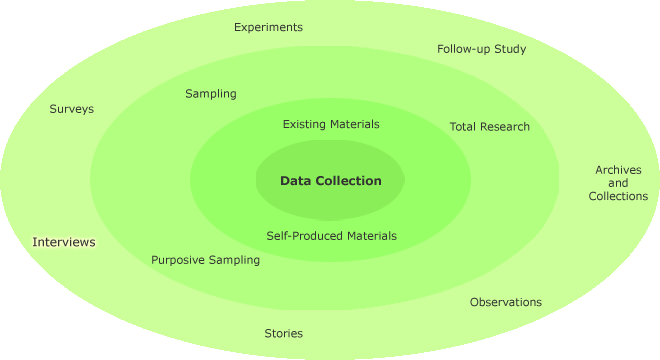Interviews

When the aim of your research is to produce knowledge of opinions, ideas, observations, attitudes, values and experiences of living people, you may reasonably use interviews to collect the data. An interview is a data collection method, in which you participate interactively in the production of the data. Interview techniques can be typified according to both the structure of the interview and the degree of interaction between you and interviewee (the person you have asked to tell the story). Interview structures depend on whether you seek a broad range of opinions (unstructured) or a narrow range (structured). The basic structures are: unstructured or open interview, semi-structured interview and structured or form interview.
You can control the degree of interaction between the interviewer and interviewee or interviewees by arranging a discussion type interview, as follows: theme interview, group interview and expert interview.
The way you document interviews depends on the structure and the necessary degree of interaction:
- Form-filling is suitable in a 1-to-1 interview.
- Audio and audio-visual recordings are both suitable for all structures and degrees of interaction.
- Note-taking is suitable as a supplement to audio-visual recording.
Protocol analysis is a strategy for conducting interviews, of which you should be aware. Protocol analysis is a data collection method, which resembles an interview. The strategy stresses thinking aloud. You ask selected people to tell how they perceive, interpret and reason about concrete and abstract objects.
Read more on interviews from the links below:
Semi-structured interview. Wikipedia, The Free Encyclopedia.
Structured interview. Wikipedia, The Free Encyclopedia.
Unstructured interview. Wikipedia, The Free Encyclopedia.
Bill Gillham, 2000. The Research Interview. Continuum.
Milton, Nick, 2003. Protocol Analysis Techniques. Epistemics.
